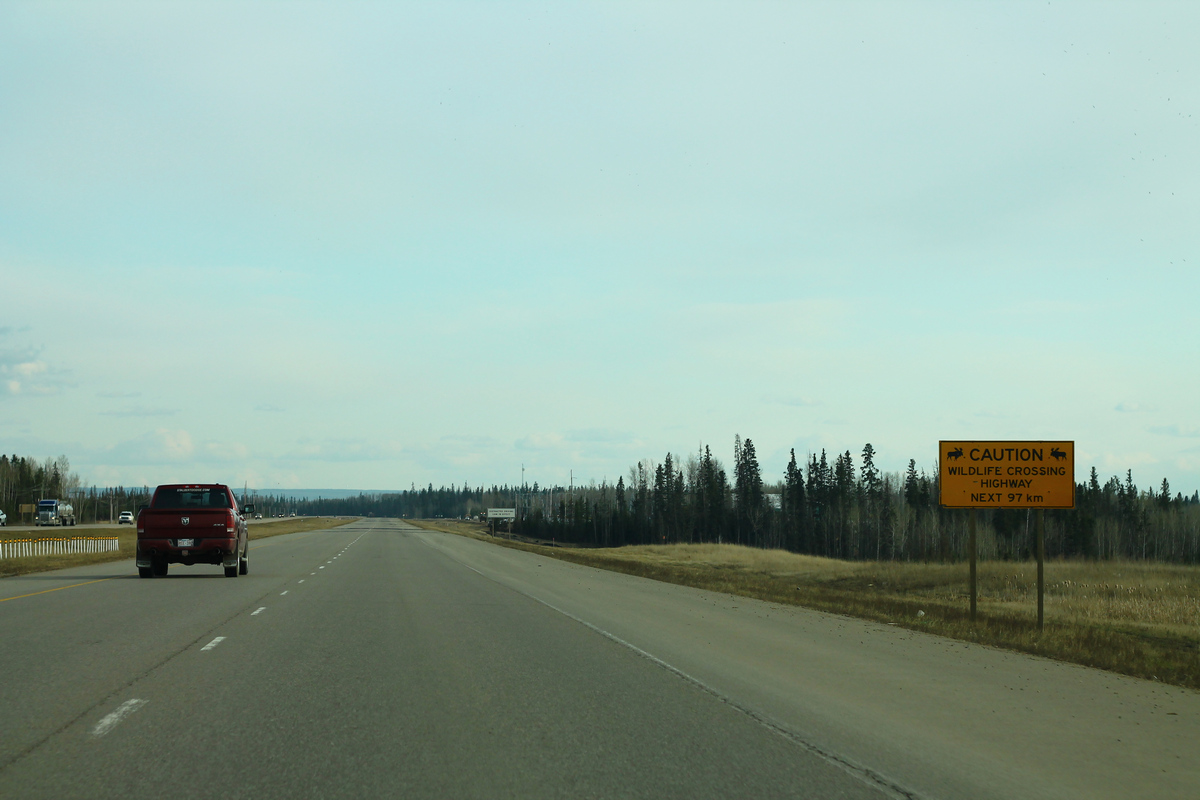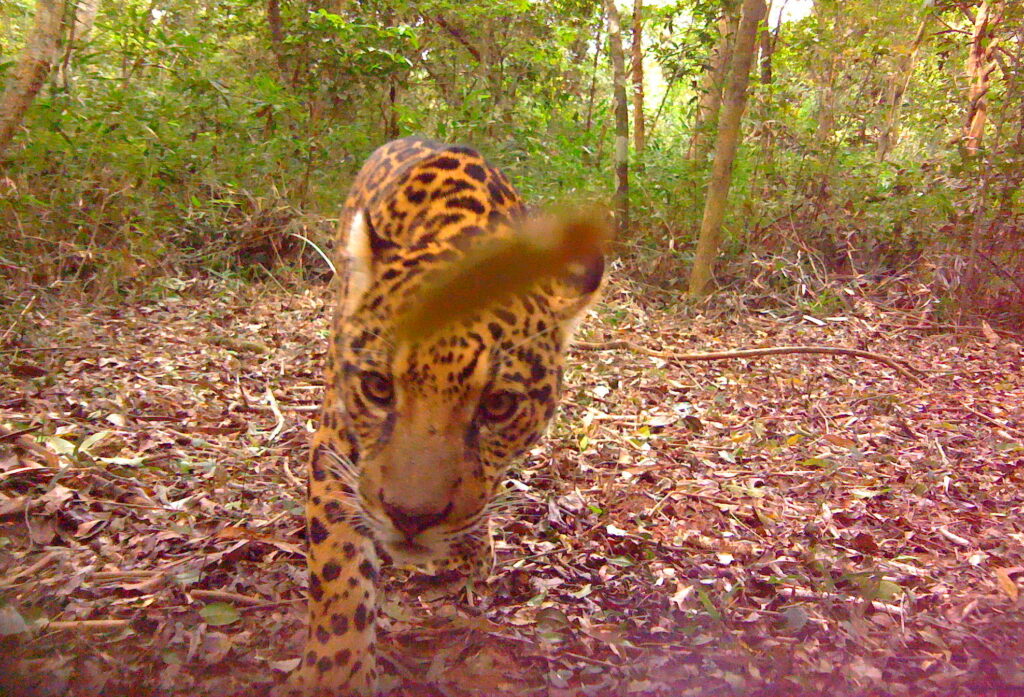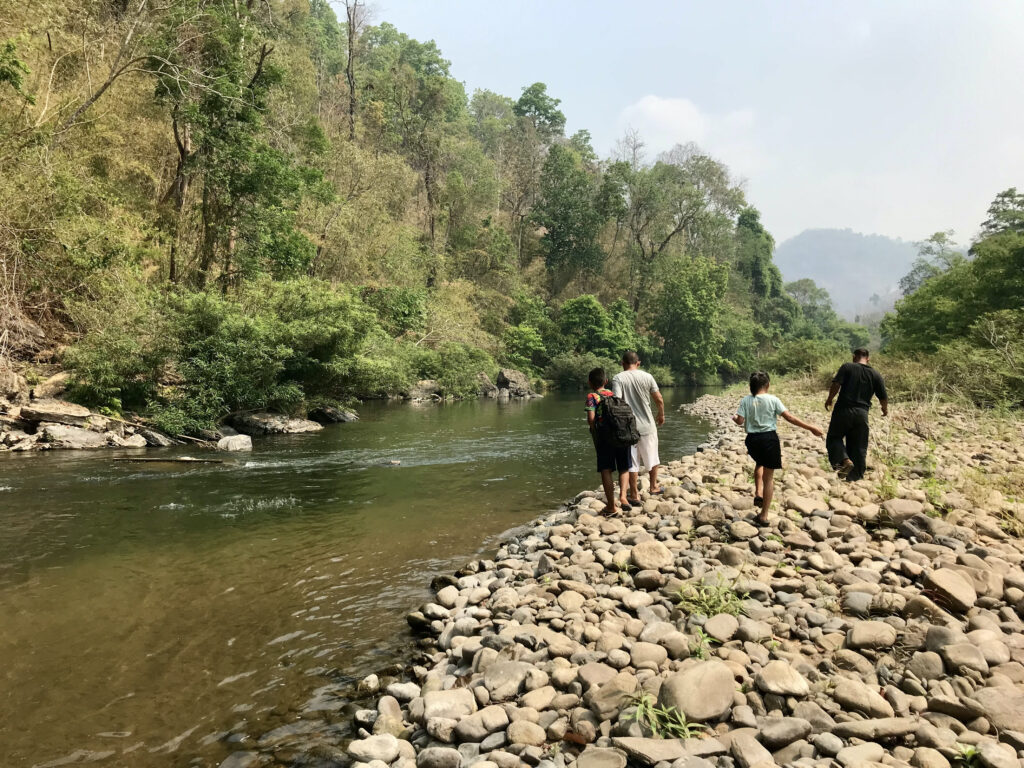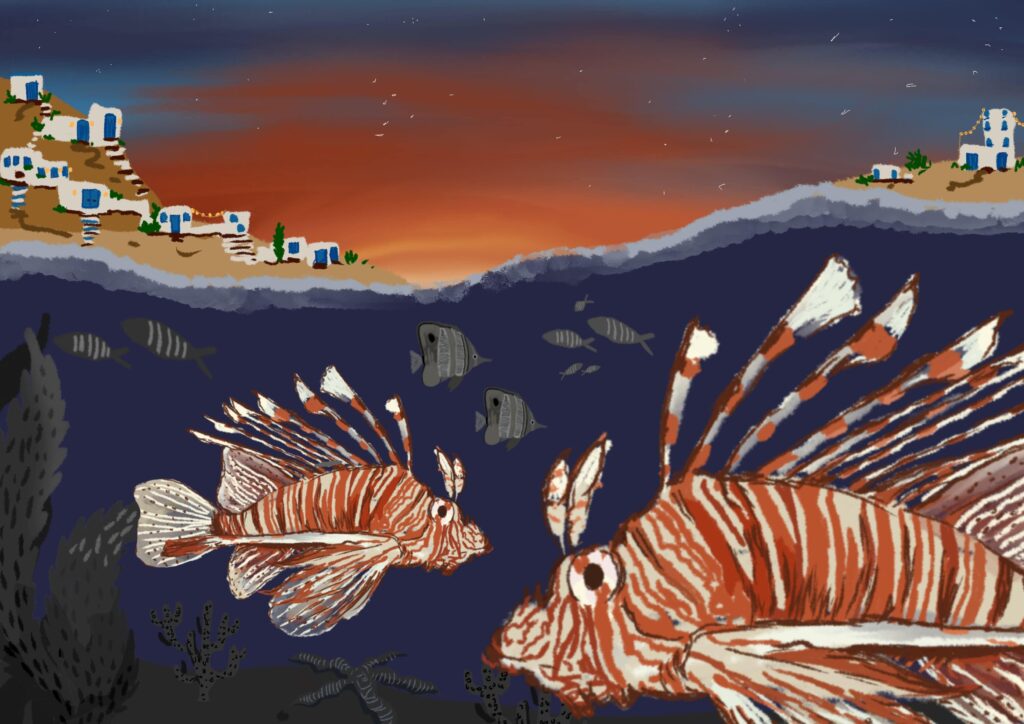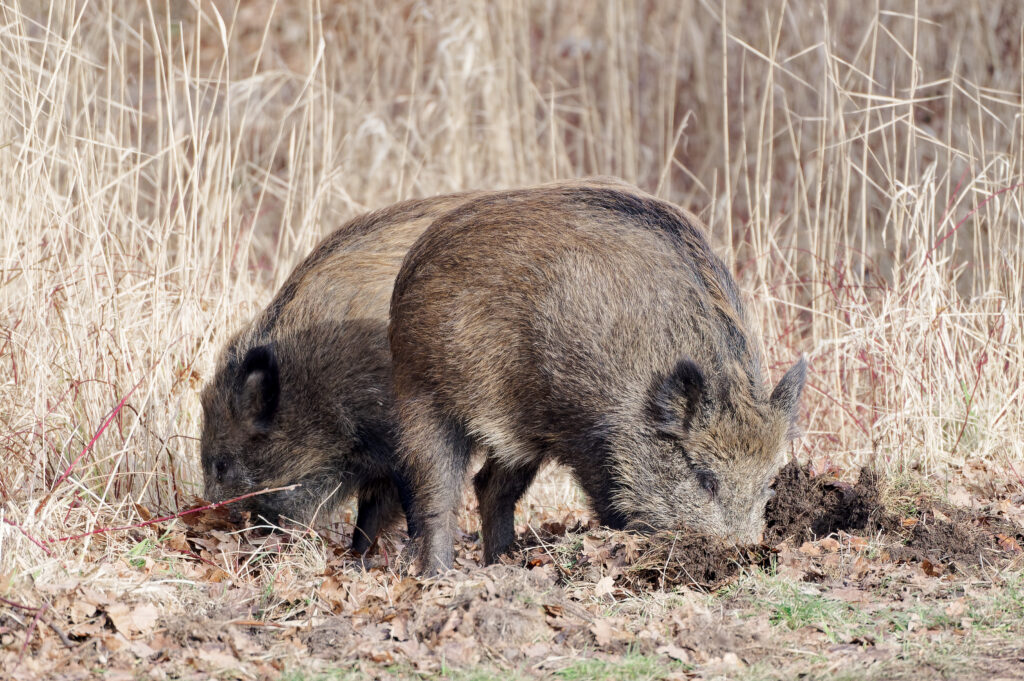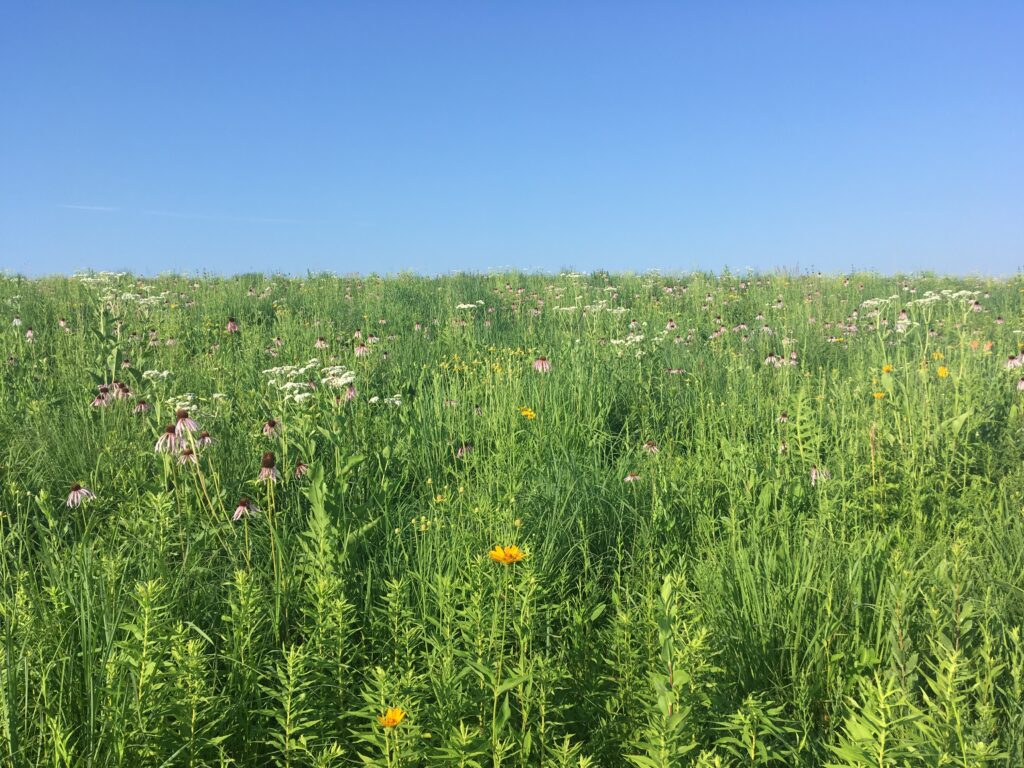Feature image: Wikimedia Commons formulanone from Huntsville, United States, CC BY-SA 2.0
Roads claim the lives of millions of animals each year. Research has focused on identifying mortality hotspots and minimising the negative effects of roads. However, the damage extends far beyond individual casualties. A species’ regional extinction can trigger cascading effects that ripple through the food web. Therefore, research should not focus exclusively on the individual effects on species, important as they are, but also address the secondary effects rippling through the network of biotic interactions.
Our study, which examined over 550 species across Europe, found that regions with high road density and near major cities, could lose up to 90 percent of their ecological interactions. This means that not only are species disappearing, but the entire structure of ecosystems is shifting in ways we are only beginning to understand.
Using the information on species ranges and verified trophic interactions across Europe, we estimated regional food webs for potential predator-prey interactions across the continent. Then, we defined thresholds for each species of how dense road networks could be before that species’ population would potentially face regional extinction. With these thresholds, we simulated species extinctions across these food webs to evaluate the effects on the network structure.
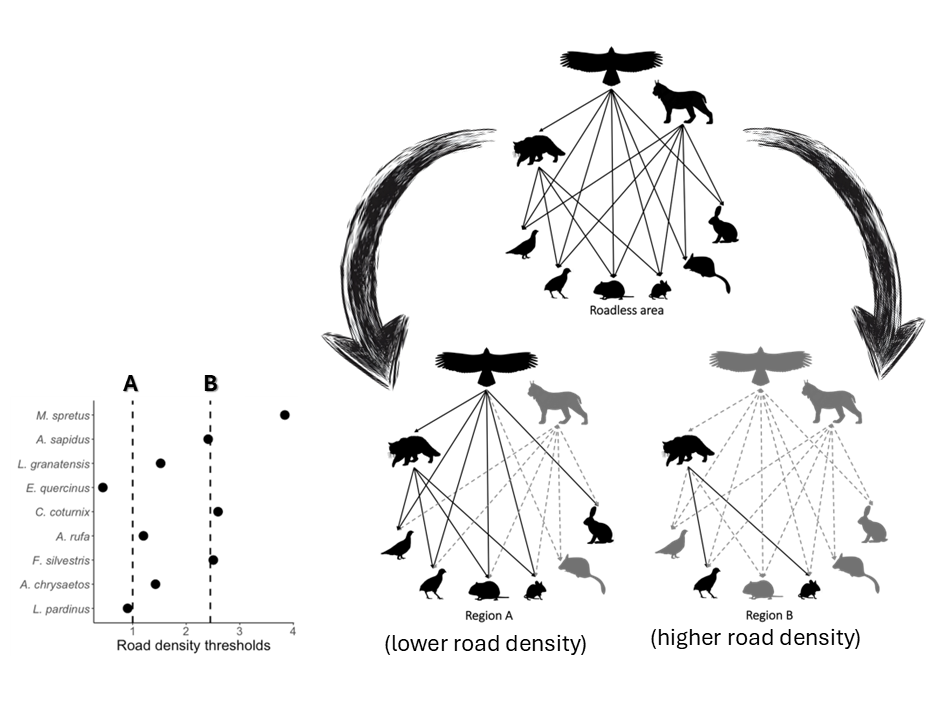
The results were stark: species at the foundation of the food web were the most directly affected by road mortality. Meanwhile, top predators, such as wolves and golden eagles, faced indirect threats as their prey dwindled in road-heavy areas. In some regions, road density resulted in the near-total collapse of food webs.
Conservation implications
Food webs are the backbone of ecosystem stability. When they are disrupted, essential ecological processes such as seed dispersal, pest control, and nutrient cycling suffer. The ripple effects of road-driven biodiversity loss extend to humans, threatening the very services nature provides.
Conservation strategies must consider the impacts of roads on ecological interactions. Wildlife corridors, road overpasses and underpasses can help mitigate the effects, allowing species to move freely and maintain their roles in the ecosystem. Planning road networks with biodiversity in mind is not just an option—it is a necessity to preserve the intricate balance of nature.
As road networks expand, we must ask: how can we build infrastructure without dismantling the ecosystems that sustain life? Our findings highlight an urgent need for policies that integrate conservation science into transportation planning, ensuring that roads serve people while safeguarding wildlife.
But, and this is key, we should not address solely the direct effects on wildlife, such as mortality, habitat loss, and fragmentation. It is essential to have a broader view of defragmenting roads strategically to allow the maintenance of ecological interactions, such as predator-prey relationships.
Further Reading
Grilo, C., E. Koroleva, R Andrášik, M. Bíl and M. González-Suárez. 2020. Roadkill risk and population vulnerability in European birds and mammals. Frontiers in Ecology and the Environment 18: 323–328. http://doi.org/10.1002/fee.2216.
Maiorano, L., A. Montemaggiori, G.F. Ficetola, L. O’Connor and W. Thuiller. 2020. TETRA-EU 1.0: A species-level trophic metaweb of European tetrapods. Global Ecology and Biogeography 29: 1452–1457. https://doi.org/10.1111/geb.13138.
Mestre F, V.A.G. Bastazini, and F. Ascensão. 2025. Effects of road density on regional food webs. Conservation Biology. Conservation Biology: e70007. http://doi.org/10.1111/cobi.70007.
